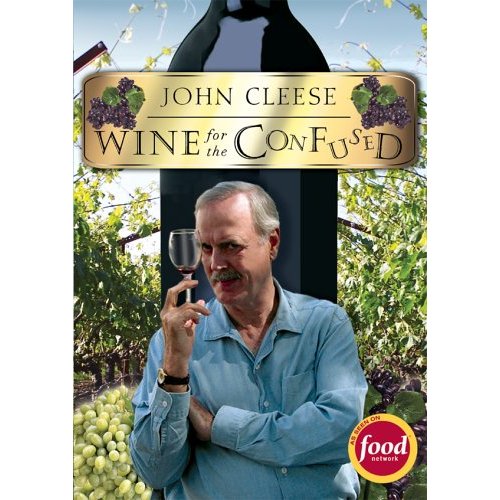 When I started this blog I only wanted to review wines, no more, no less. However tonight I came across this video on hulu.com (dont worry its free and legal to watch): http://www.hulu.com/watch/79439/wine-for-the-confused.
When I started this blog I only wanted to review wines, no more, no less. However tonight I came across this video on hulu.com (dont worry its free and legal to watch): http://www.hulu.com/watch/79439/wine-for-the-confused.This 45 min documentary follows John Cleese around California while he hosts a blind wine tasting, travels to different local vineyards, visits a restaurant, and finally invites wine professionals to his house, all for the sake of making wine more approachable and less 'posh.' I found it very interesting because it stared John Cleese, and because it is a documentary for basic wine appreciation, understanding and purchasing. The reason I decided to post this video on the blog was because the program made some great points that I want to stress.
1) No one should tell you what you should like. While reading reviews is a great way to find out about different wines, and read other people's opinions, I cant stress enough that reviews are just that, other people's opinions. I've heard a few good sayings that solidify this point, "Drink what you like, and all the rest is commentary" and "Trust your own palate." There are objective ways to evaluate the different aspects of wines, but those equations do not take into consideration that each person has their own palate and therefore enjoy different things. Personally I dont usually like the wines that Robert Parker (a big time wine critic) likes, typically I tend to enjoy the wines that Stephen Tanzer (another big time critic) enjoys the most. This is not always true, but its a good way for me to find new things that I may like.
2) Just because a wine is expensive doesnt mean that its good, and again the opposite is also true. Expensive doesnt always equate to quality, and inexpensive doesnt always mean its not good. Ive tried some amazing wines that were more than one months rent, but Ive also tried expensive wines that didnt really impress me. Also there have been some wines that cost less than a large pepperoni pizza that are aso impressive.
3) Try new things, and dont get stuck on trends. In the 80's and 90's merlot was a top selling grape, then a popular movie came out shunning merlot and praising pinot noir. Guess what...pinot noir sales when up and merlot went down. Personally I like merlot, some of my favorite bordeaux wines are predominately merlot.
4) Work on developing your palate, and building a vocabulary to help pull out specific features of the wines you like. The only way to do this is drink more wine.
5) Find a store that you like, and start a dialog with the employees. Dont be afraid to tell them what you like and allow them to make recommendations for new things.
So there are many other little tid-bits in this documentary as well as interviews with winery owners, grape growers, sommelier, and other wine professionals. I must admit that I wish it had more humor, but it covers some basics about wine, and is a good show for people just getting into wine. Don't worry this is not going to become a habit (reviewing anything other than wine itself), but again I thought this video made some good points and I wanted to share it with others.
Let me know what you think
Galen



